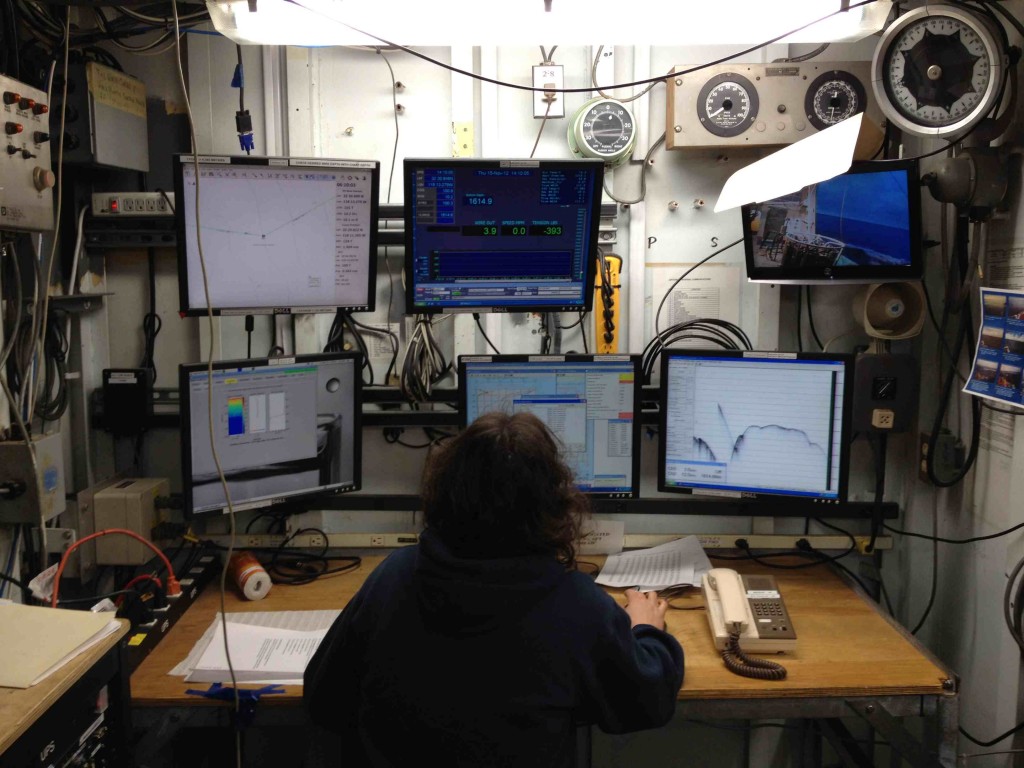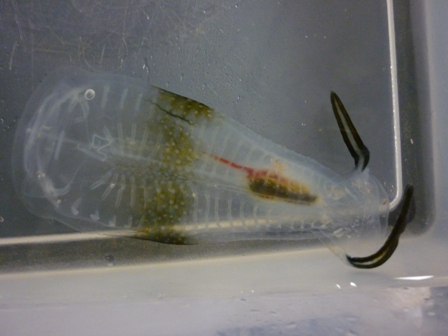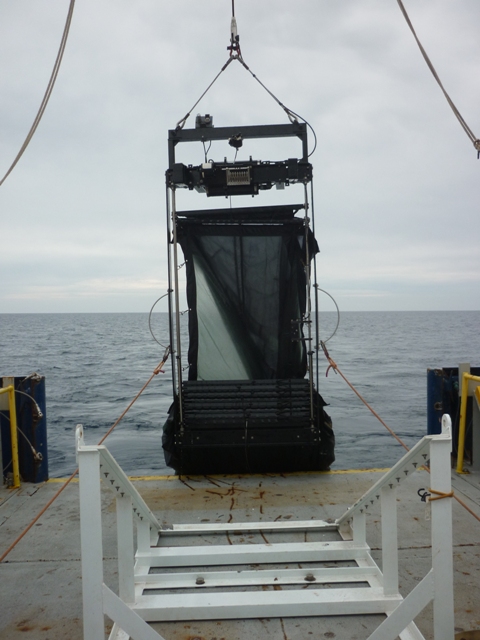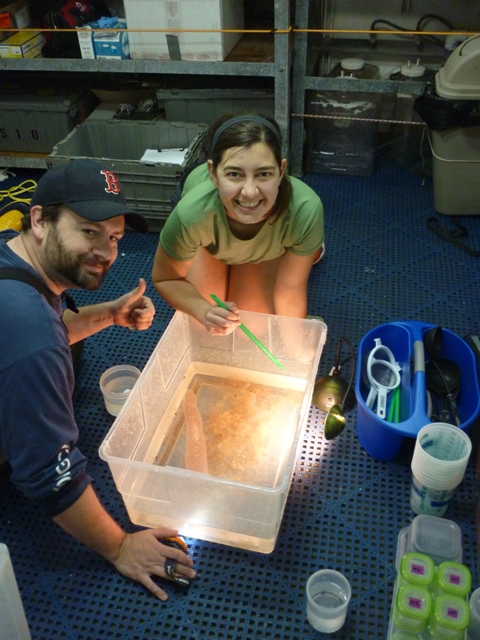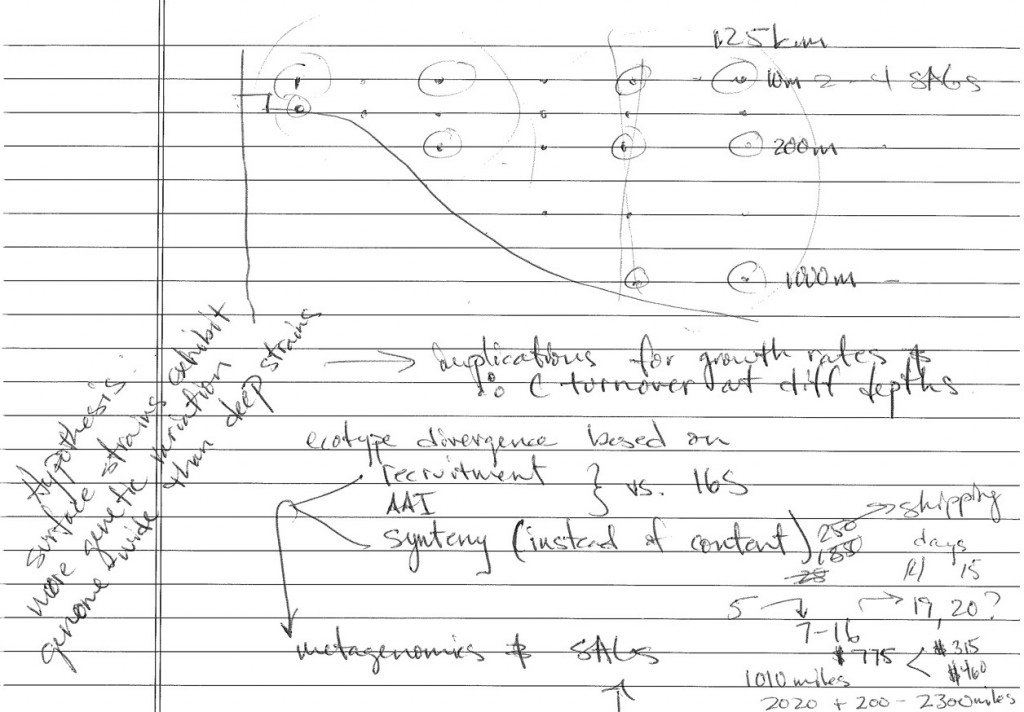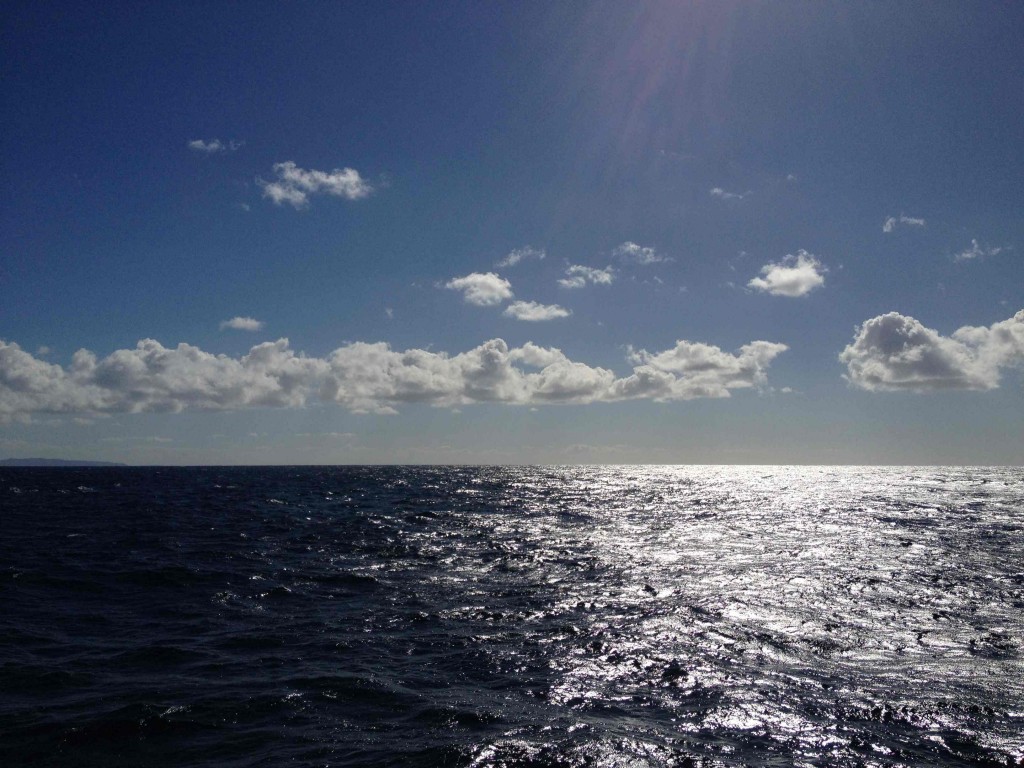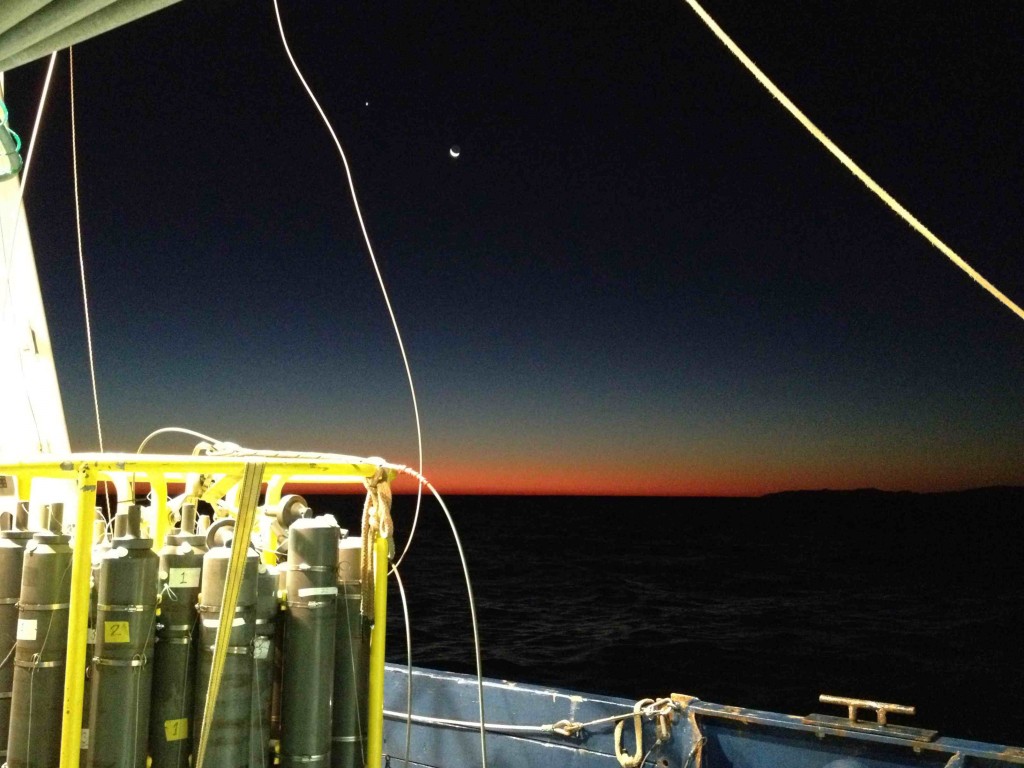Bacteria genes, microscale turbulence and ocean optics, pteropod species and distributions, salp physiology, anoxic basins, internal waves, iron complexes and oxidation, amphipods in oxygen minimum zones, nitrous oxide in water and sediments, pore water radon, phosphorites, viruses.
Over the past week the participants of NH1212 have gathered samples and data, discussed and linked these research areas. They have shared the latest ideas and methods, statistical packages, pictures, stories, lack of sleep and close quarters. What are the common threads?
I can think of many. First, the scientists aboard are accomplishing new research on diverse questions from a single research vessel. We call these vessels multi-purpose for good reason. This week R/V New Horizon has towed multiple opening and closing nets, hosted atmospheric gas sensors, pumped ocean surface water to filters and sensors, lowered novel current meters, triggered rosette samplers, cored the seafloor, and been a laboratory for complex sample processing and measurements. Second, and more importantly all these activities concern the ocean, that 70% of our planet that has evolved life and climate, and continues to influence where we live, our atmosphere and weather, and what we eat. I’m excited we have many bright minds studying our oceans. I will wager many in this group will work together again and find many of the hidden threads that are essential to the fabric of Earth’s ocean.
Mentor Clare- waxing poetic

